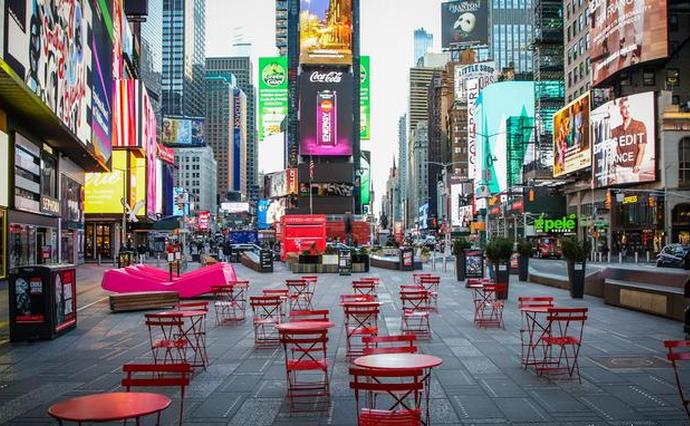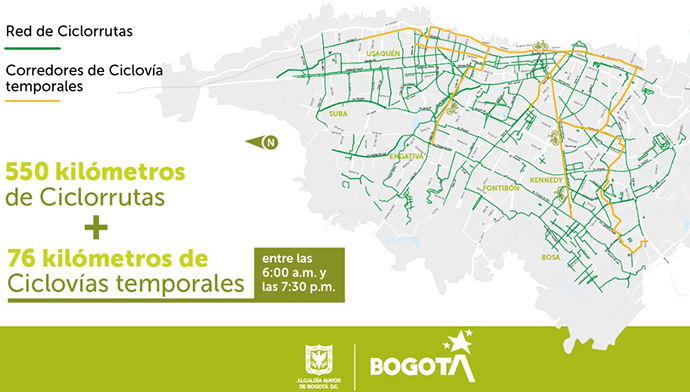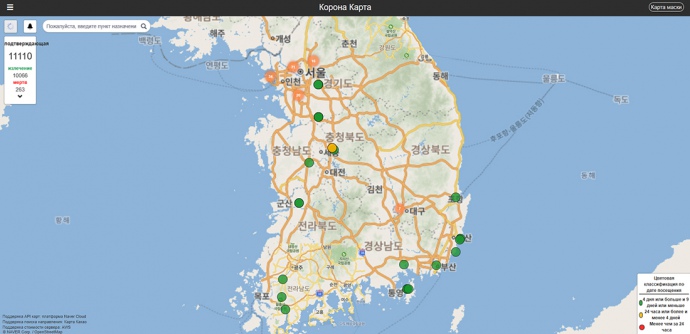How a pandemic will change cities: six concepts
 Throughout the history of mankind, pandemics have significantly influenced the development of megacities. EP learns how COVID-19 will affect cities in the world.
Throughout the history of mankind, pandemics have significantly influenced the development of megacities. EP learns how COVID-19 will affect cities in the world.Diseases form cities. Some of the most significant events in the field of urban planning and management, for example, the creation of the London Metropolitan Labor Council and the sewage system of London, were a response to outbreaks of cholera in the 1850s, which claimed 10 thousand lives.
Now, with the list of infectious diseases, including the Spanish flu of 1918 in New York and Mexico City, the Ebola epidemic in West Africa in 2014, COVID-19 is joining the City Lab.
Urbanists believe that after the pandemic ends, the world as a whole and cities, in particular, will part with the naive belief that “nothing will happen to us” and will be more responsible in ensuring resilience to future pandemics.
“We can be sure of one thing: other disasters are waiting in the wings. Preparing for the next emergency should begin today”, – said Sue Wick, editor of Smart Cities World.
EP has collected the publications of the most respected world publications to find out how, according to experts in the field of urban planning, the COVID-19 pandemic will affect the further development of cities in the world.
6. The popularization of alternatives to public and road transport
The fight against the pandemic has led to a radical reduction in the number of passengers in public transport. Mayors of many cities block the streets for public transport and private cars, stimulating the development of bicycle infrastructure.
The Mayor of Bogotá (Colombia), Claudia Lopez, announced that the Ciclovía tradition (closing on certain days of the week a number of streets for cars and opening them for cyclists, pedestrians and runners) will be valid not only on Sunday, but also on weekdays.
As a result, more than 76 km of blocked city streets became accessible for cycling. They supplemented the 500 km network of permanent city bike paths.

Ciclovía in Medellin (Colombia), 2017
CicLAvia in Los Angeles (USA), 2019
There is a surge in cyclist activity in New York, Philadelphia and some cities in China. The increase in bicycle traffic has led to increased residents’ attention to the safety of bicycle infrastructure.
In response to a call from New York City Mayor Bill de Blasio to “ride a bicycle or go to work on foot”, the non-profit organization Transport Alternatives filed a petition with the mayor’s office to urgently expand the network of bike paths and other changes to city infrastructure.
5. The Prosperity of Remote Work
The value of the proximity of the place of residence to the place of work is declining due to quarantine restrictions. As many employees switch to the remote work format, they are redefining their dependence on built-up metropolitan areas, where the cost of living is often high.
Residents of cities have the opportunity to gain greater independence and flexibility. This will reduce the burden on automotive infrastructure, especially in areas where traveling to work by car is the norm.
This trend will also reduce CO2 emissions, and time spent in congestion can be used for work or leisure.
The heyday of remote work is also able to revitalize the suburbs and small cities, create new cultural centers, local enterprises, contribute to the expansion of communities and social ties.
4. The decrease in urban density
“Now you will often compare the value of urban densification with the risks that such densification carries in the event of an outbreak of a fatal disease”, – said Michelle Akuto, professor of global urban politics at the University of Melbourne’s School of Design.
According to him, COVID-19 poses a fundamental challenge to the urbanization management strategy: “Hong Kong has a population density of 6,683 people per sq km (Kyiv – 3,408 people per sq km. – Aut.). Rethinking density control is the key to long-term survival. in a pandemic world”.
As a result of the pandemic, urban planners will face a contradiction: the desire of the population to concentrate in cities and the need to divide the population to prevent transmission.
“We are reducing population density, for good reason, but overall density is good: denser cities are more energy efficient.
In the long run, there will be a conflict between competing public health requirements and energy efficiency”, – says Richard Sennett, professor at the Massachusetts Institute of Technology and senior UN adviser on climate change and cities.
In recent years, the cities of the world located to the south have been growing as a result of internal migration from villages. Cities located to the north develop in the opposite direction: wealthy residents take advantage of remote work and move to small towns and villages, where cheaper real estate and a higher quality of life.
3. Accelerating the development of smart cities
A pandemic could accelerate the development of digital infrastructure in cities.
In South Korea, where one of the lowest death rates from COVID-19, a controversial innovation was used to control the disease.
After the outbreak of the Middle East Respiratory Syndrome (MERS) in 2015, authorities received the right to collect data from smartphones and credit cards in order to establish an individual profile of the movement of patients.
Then this data is transmitted in anonymous form to the application, and everyone can find out if he had contact with an infected person. This helped South Korea stop the spread of COVID-19 in just ten days.
In China, the country’s leadership enlisted the help of technology companies Alibaba and Tencent to analyze big data and predict the emergence of transmission clusters.
If the governments of South Korea and China conclude that the smart cities of Songdo (South Korea) and Shenzhen (China) are safer from a health point of view, then more efforts can be expected to digitally record population behavior in urban areas.
This will provoke even more fierce debate about the legitimacy of such surveillance of people by states and corporations.
2. Creeping authoritarianism
Sennett also speaks of the “ghost of creeping authoritarianism” when emergency measures to combat a pandemic become permanent.
“If you study history, starting from the French Revolution and ending on September 11 in the USA, you will see that it took centuries to eradicate some of the rules introduced by the governments of different countries to control the urban population in times of crisis,” said the professor.
He adds that in times of ethno-nationalism, when right-wing populists took up elected posts in many countries, one of the consequences of the coronavirus might be the idea of establishing borders around cities.
1. Digital Infrastructure May Be New Sanitation
When the number of infected people sharply increased in the city of Daegu (South Korea), the government implemented a strategy of open data and public participation in their processing. This caused some criticism, as well as the emergence of new pandemic countermeasures.
South Korea asked people to use quarantined mobile applications that allow them to contact doctors for self-diagnosis. Mobile applications and sites were launched that, based on the data collected, provided information on the spread of the disease.


The Corona 100m mobile app
An interactive map created by a college student and filled with government data shows the places visited by infected people. The Corona 100m application uses this data to notify citizens when they are within 100 meters of these places.
“Planning and construction were born from the development of 19th-century sanitation in response to the spread of malaria and cholera. Digital infrastructure can become the sanitation of our time”, – Akuto summarizes.
Source: epravda.com.ua










